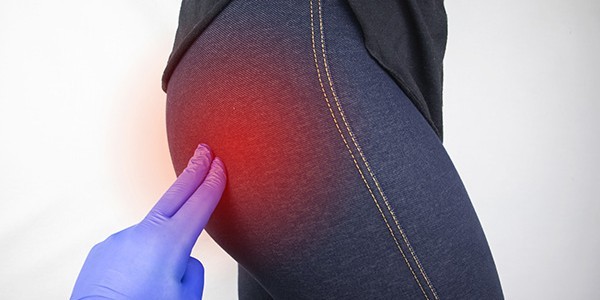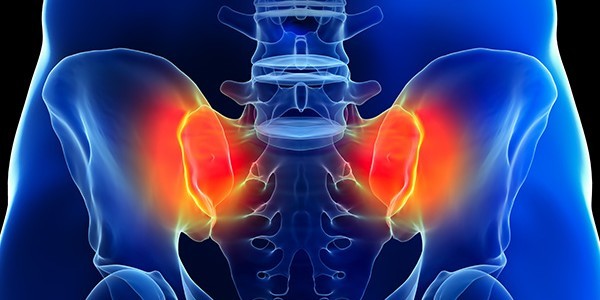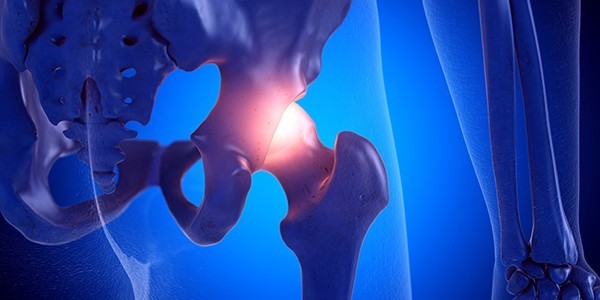![[VIDEO] Ultrasound-Guided Injection for Trigger Finger](https://drjordijimenez.com/imagen/100/100/Imagenes/infiltracion-ecoguidada-dedo-resorte-drjordijimenez.jpg)
- Home /
- PATHOLOGIES /
- HIP PATHOLOGY
HIP PATHOLOGY
HIP PATHOLOGY
DR. JORDI JIMÉNEZ
The hip is a critical joint that supports our weight and allows us to perform essential movements. Various conditions, both traumatic and orthopedic , can affect this joint, causing pain and limiting our quality of life. In our trauma and orthopedic surgery practice, we approach hip pathologies with a comprehensive approach, exploring treatment options that go beyond surgery.
What conditions can affect the hip?
In addition to those mentioned above, other important hip pathologies include:
- Hip osteoarthritis (Coxarthrosis): Wear and tear of the joint cartilage, causing pain, stiffness, and limited movement.
- Tendinitis and bursitis: Inflammation of the tendons or synovial bursae around the hip, causing localized pain.
- Femoroacetabular impingement (FAI): A condition where the abnormal shape of the hip bones causes a rock that can damage the cartilage.
- Hip dysplasia: An abnormal development of the hip joint.
- Muscle and ligament injuries: Strains or tears that can occur due to trauma or overexertion.
Among traumatic pathologies, we find:
Hip fractures: Common in older adults due to falls, but can also occur in younger adults due to high-energy trauma. These include femoral neck, intertrochanteric, and subtrochanteric fractures .
Hip dislocation: The separation of the head of the femur from the acetabulum (pelvic cavity). Usually caused by high-energy trauma.
Traumatic labral injuries: Tears of the acetabular labrum, the ring of cartilage surrounding the acetabulum, often associated with trauma or sudden movements.
Among orthopedic pathologies (non-traumatic), we can add:
Osteonecrosis of the femoral head (ONCF): Loss of blood supply to the head of the femur, which can lead to collapse of the bone and joint.
Transient synovitis of the hip: A common cause of hip pain in children, usually self-limited.
Our goal is to relieve your pain and improve your hip function using the least invasive treatment options possible. We will comprehensively evaluate your condition to determine the most appropriate plan for you.
If you are experiencing hip pain or discomfort, we invite you to consult with us to explore the various treatment options available.
Make an appointment with Dr. Jordi Jiménez. He'll see you in the center of Palma and help you regain your quality of life.
RELATED NEWS
Why does my hip click when I move? Learn what snapping hip (coxa saltans) is.
Do you feel or hear a snapping sound in your hip when you move? You could be experiencing snapping hip, medically known as coxa saltans or snapping hip syndrome (SHS). This common condition, which can be painful or painless, is characterized by a not...
Ischiofemoral Hip Impingement: What Is It and How to Relieve the Pain?
What Is Ischiofemoral Hip Impingement? Pain in the back of the hip can be a mystery to many, often confused with lower back problems or sciatica. However, there is a specific, little-known but increasingly diagnosed condition: ischiofemoral impingeme...
Sacroiliac joint dysfunction
What is sacroiliac joint dysfunction? Sacroiliac joint dysfunction refers to the presence of pain in one or both sacroiliac joints. The sacroiliac joints are the junctions between the sacrum and the ilium, and are located at the bottom of the spine....
Iliopsoas tendinopathy
What is Iliopsoas Tendinopathy? Iliopsoas tendinopathy is a condition that occurs when the tendon or bursa of the iliopsoas muscle becomes inflamed or injured due to overload or overuse. The iliopsoas muscle is composed of two distinct muscles, the p...
Gluteus medius syndrome
What is Gluteus Medius Syndrome? Gluteus medius syndrome, or trochanteritis, is an inflammatory condition that affects the tendons of the gluteus medius muscle, a key stabilizer of the pelvis. It is characterized by pain in the buttock and lateral hi...
Hip osteoarthritis
What is hip osteoarthritis? Hip osteoarthritis, also called coxarthrosis, is a degenerative disease that affects the hip joint. It is characterized by the progressive deterioration of the articular cartilage and underlying bone, causing pain, stiffne...
Piriformis syndrome
What is piriformis syndrome? Piriformis syndrome is a condition that occurs when the piriformis muscle, located at the back of the hip, becomes inflamed and compresses the sciatic nerve that runs beneath it. This compression can cause pain in the but...
Femoroacetabular impingement
What is femoroacetabular impingement? Femoroacetabular impingement is a condition in which there is abnormal friction between the hip bones, specifically between the femoral head and the acetabulum. This can cause damage to the hip joint and lead to...








![[VIDEO] Ultrasound-guided infiltration of the lumbar facets](https://drjordijimenez.com/imagen/100/100/imagenes-pagina/sindrome-facetario-lumbar-drjordijimenez (1).jpg)
![[VIDEO] Ultrasound-guided infiltration of the hip joint](https://drjordijimenez.com/imagen/100/100/Imagenes/valgo-dinamico-rodilla-drjordijimenez.jpg)